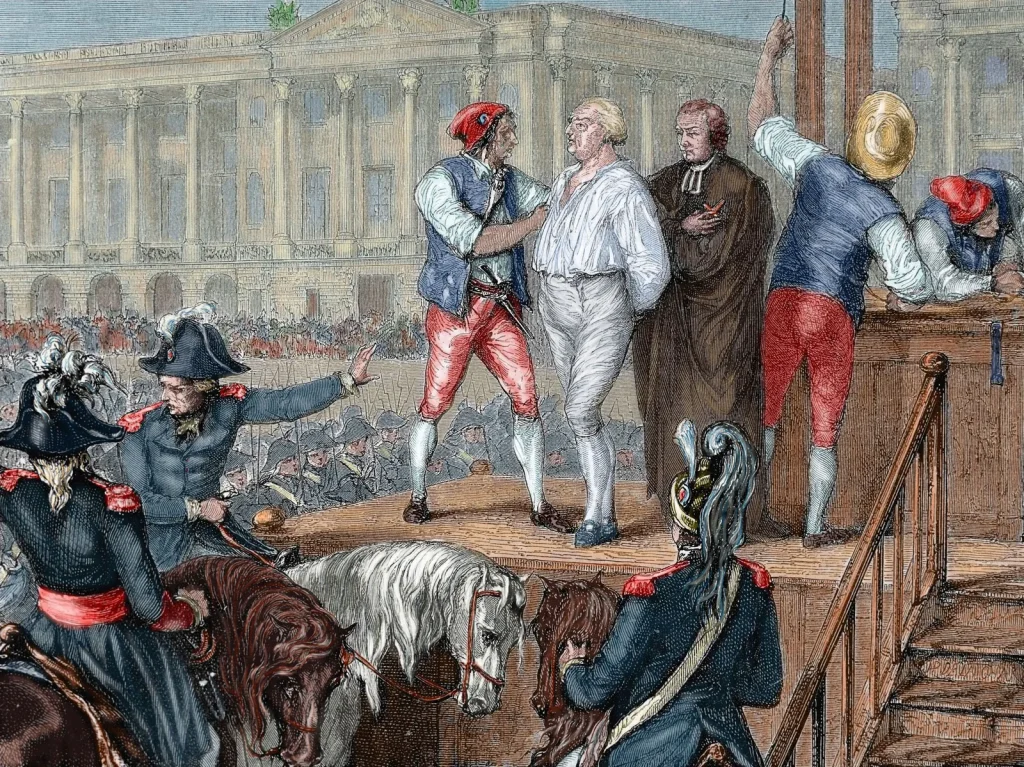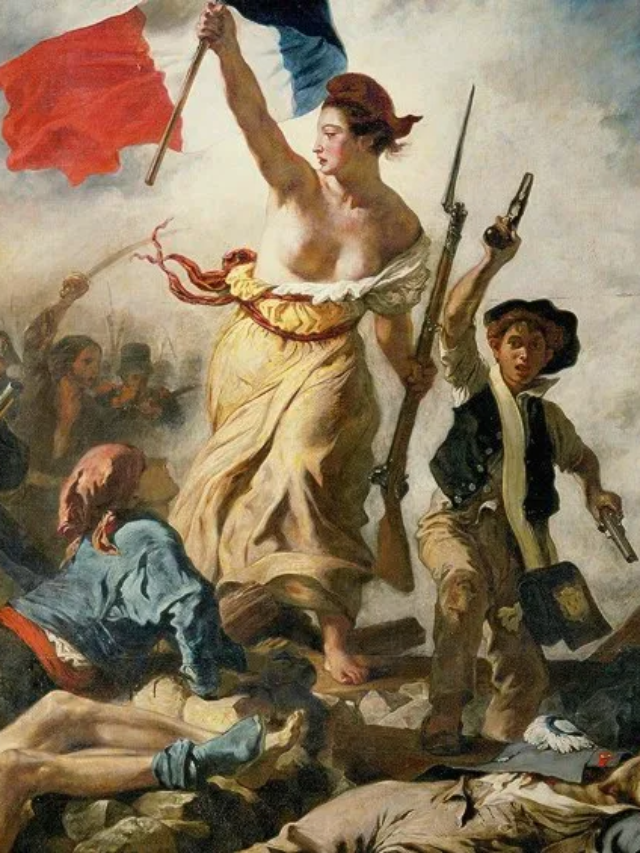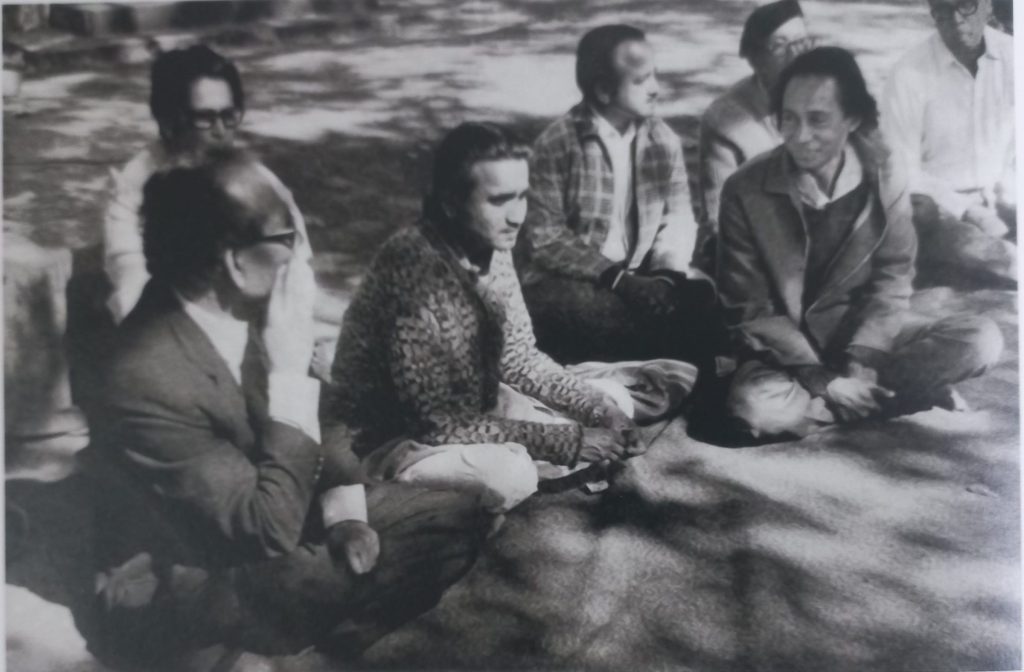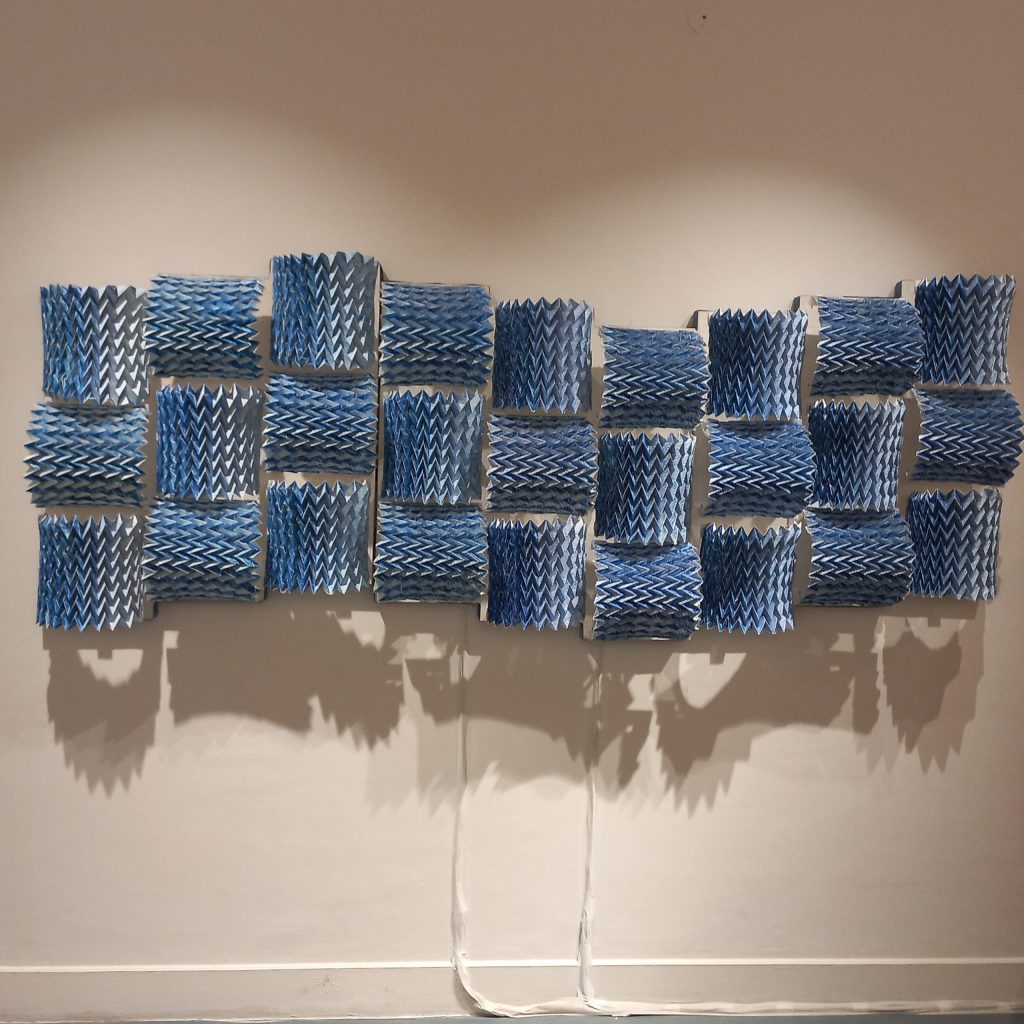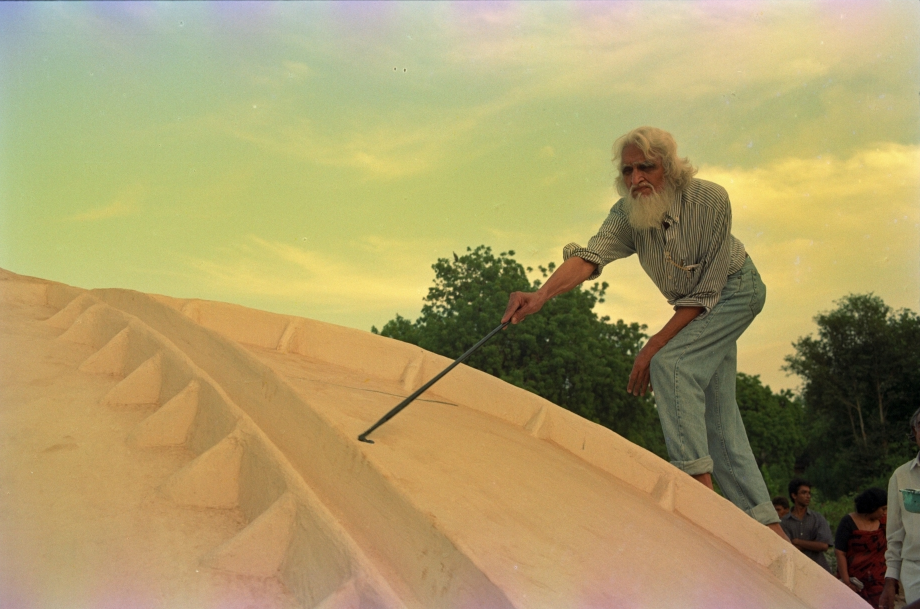A revolution is necessary to disrupt the status quo and push forth new ideas. Even though a revolution is based on an idea, it can never be successful without public participation. You may be familiar with Banksy’s artworks plastered across the streets of London or the role of art in the 1979 Iranian Revolution. Today, we turn the clock back to focus on the art inspired by the French Revolution timeline (5 May 1789 – 9 November 1799). The French Revolution was a period of radical social and political upheaval in France which was a significant turning point in world history, bringing an end to absolute monarchy, and feudalism, and ushering in the rise of democratic ideals.
French Revolution Summary
Reasons for the French Revolution included public discontent, fueled by economic hardship, social inequality, and political corruption. The storming of the Bastille on July 14, 1789, symbolized the beginning of the revolution. The revolutionaries formed the National Assembly, and in 1789, they adopted the ‘Declaration of the Rights of Man and of the Citizen’, proclaiming equality, liberty, and fraternity as fundamental rights. Under the leadership of Maximilien Robespierre and the Committee of Public Safety, the Reign of Terror (1793-1794) commenced which led to the abolition of monarchy and the guillotining of King Louis XVI and Queen Marie Antoinette. In 1799, the revolution came to an end with the rise of Napoleon Bonaparte, who seized power in a coup and eventually established himself as Emperor, bringing an end to the revolutionary ideals of liberty, equality, and fraternity.
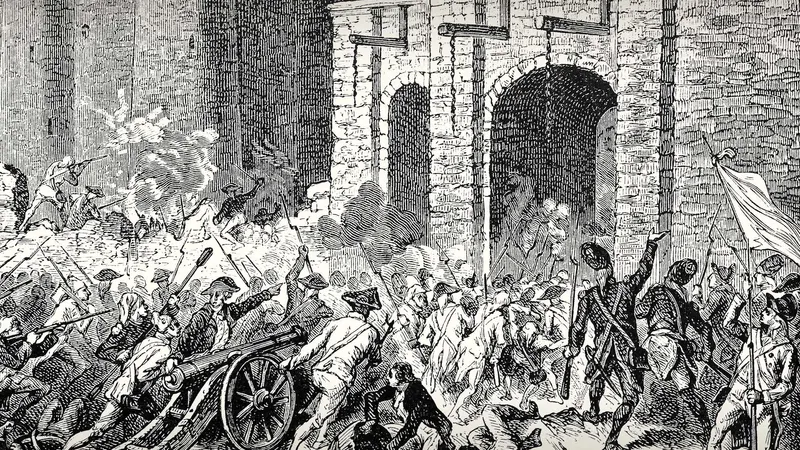
Causes Of The French Revolution
- Economic Inequality – The burden of disproportionate taxation contributed to economic hardship among the lower classes.
- Social Injustice – The widespread discontent due to the rigid social structure of the ‘Ancien Régime’.
- Financial Crisis – Financial crisis due to its involvement in expensive wars (American Revolutionary War) leading to a substantial national debt.
- Enlightenment Ideas – Enlightenment philosophies advocating for individual rights, reason, and democracy inspired the French population to demand political change.
- Food Shortages – Poor harvests and high food prices exacerbated by a feudal system created rampant hunger and discontent.
French Revolution Images
Several artists depicted the historical events which led to the French Revolution. The following are some of the most exquisite and influential French Revolution paintings which stood the testament of time.
Jean-Baptiste Lallemand – The Storming Of The Bastille (1789)
The painting must not be taken at face value. While the Bastille did indeed fall, it represented the downfall of the monarchy and its oppressive rules. The painting is the artist’s attempt at retrospecting rather than a factual representation. That may be the reason why none of the faces are as detailed. The only thing that unites them is the notion of a country and being French.
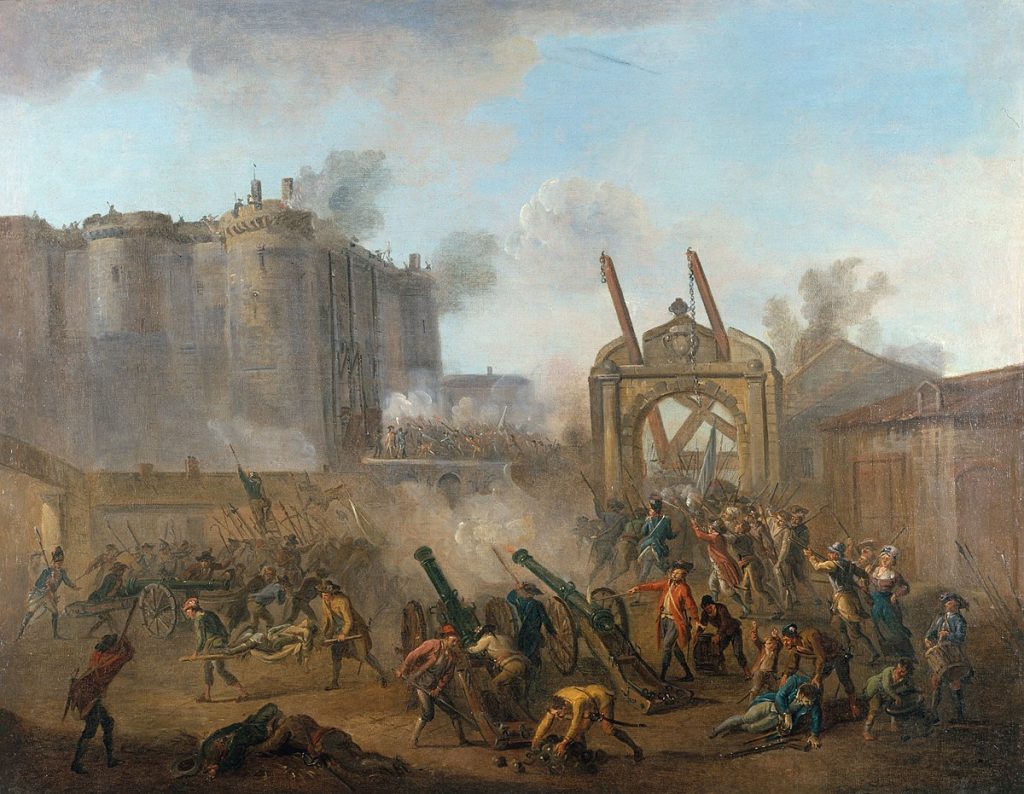
Jean-Jacques-François le Barbier – Declaration of the Rights of Man and of the Citizen (1789)
Jean-Jacques-François le Barbier served as the official court painter under Louis XVI. After the obliteration of the monarchy, he worked extensively for the French Revolution. This painting marks his pro-revolutionary shift. It features the ‘Declaration of the Rights of Man and of the Citizen’. While Marianne breaks free from her shackles, an angel blesses the document and hence the collective French future.
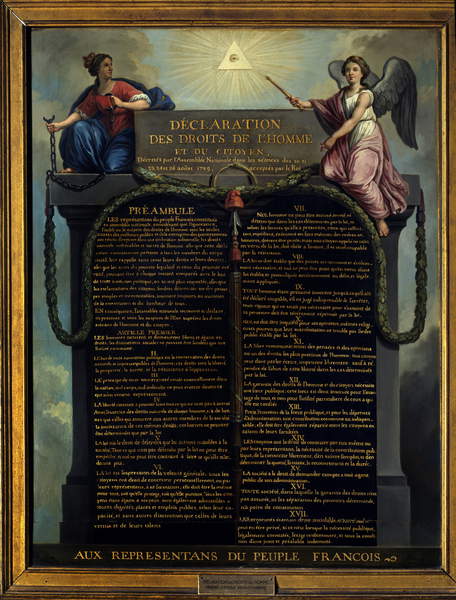
Jacques-Louis David – The Lictors Bring to Brutus the Bodies of His Sons (1789)
Despite not presenting the then-contemporary events, the picture is undoubtedly an accurate projection of the French Revolution. Brutus’s son arranged a coup to overthrow Brutus. The punishment for this treason is execution. But will Brutus save his blood or the nation? While Brutus’ wife and daughters seem distraught by his decisions, Brutus with an unexpressive demeanor knew the example he had to set for the nation to follow.
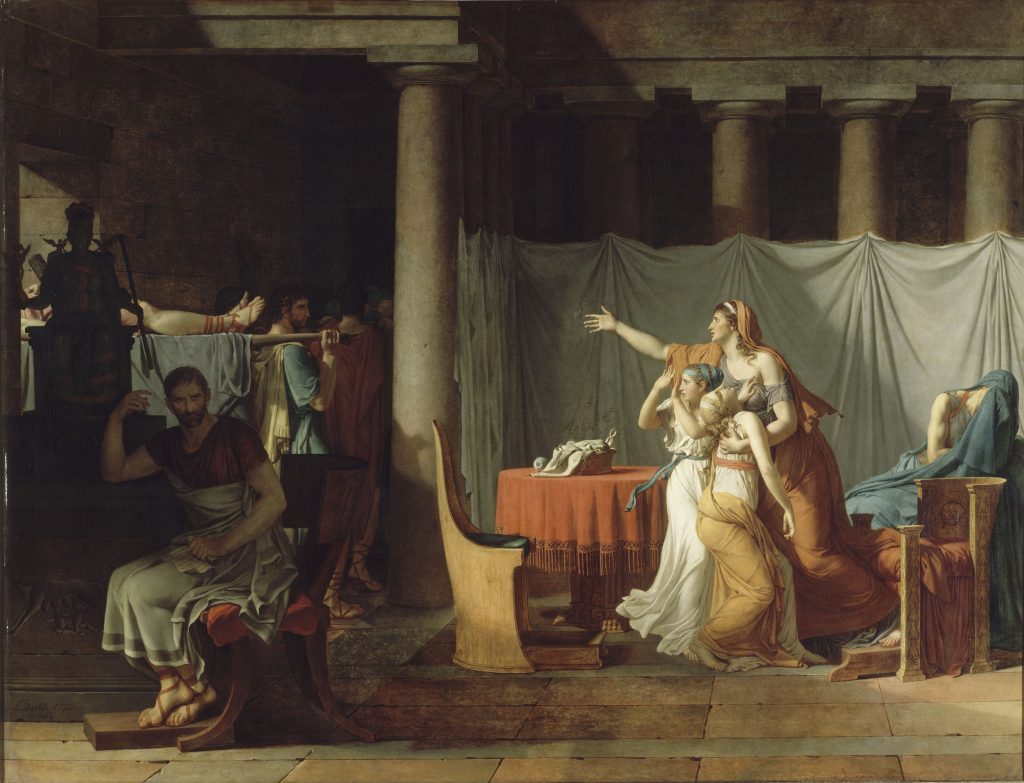
Jacques-Louis David – The Tennis Court Oath (1790-1792)
The painting features a pivotal moment which united the Frenchmen. The painting depicts the common men vowing to stand united to the cause of liberty and equality. The painting evokes imagery of the repercussions of the French Revolution. Even though one man could not debunk the entire system, the United Front is a tribute to the revolutionary spirit and collective action.
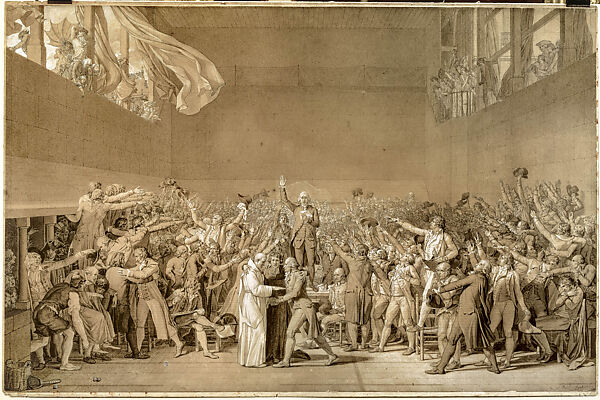
Jacques-Louis David – The Death Of Marat (1793)
The Jacobin leader Jean-Paul Marat is presented as a Christian martyr. It’s almost as if he is a saint of a new political order, who was killed while drafting a new proposition or idea. The painting borrows from the assassination of Marat by his political enemy, Charlotte Corday.
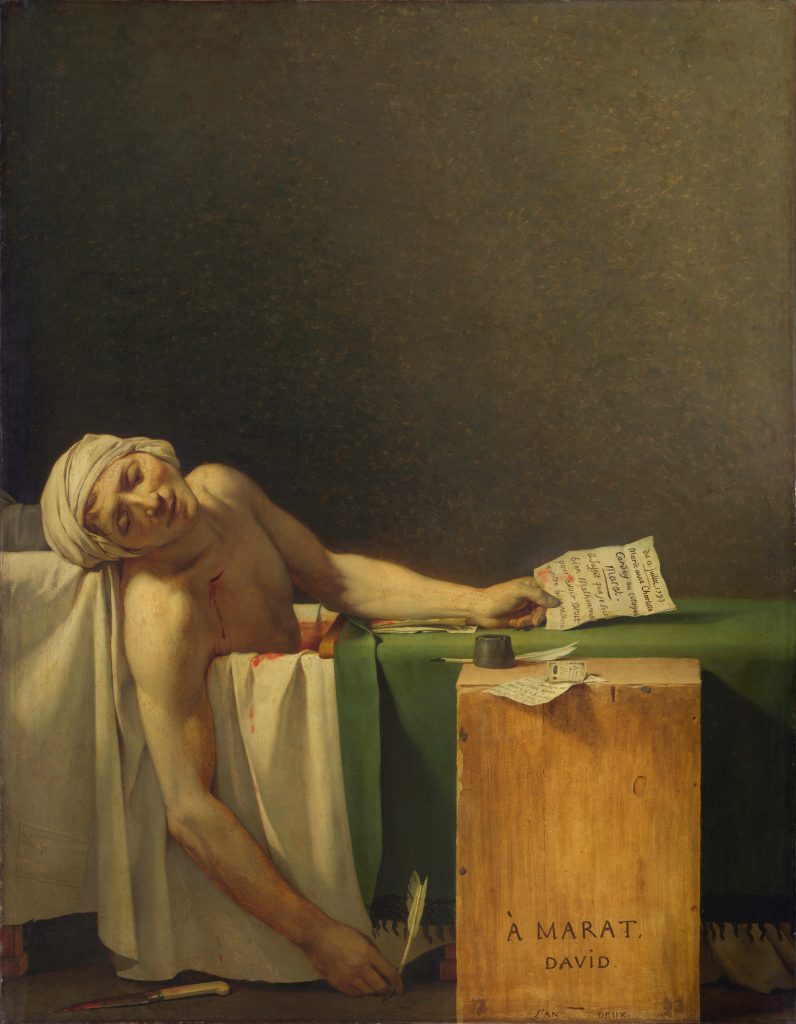
Pierre-Antoine Demachy – Une exécution capitale, la place de la Révolution (1793)
The painting depicts a man being executed. His crime? Opposing the revolution. The painting is set at La Place de la Concorde; the same place where Louis XVI was executed a month later, followed by Marie-Antoinette.
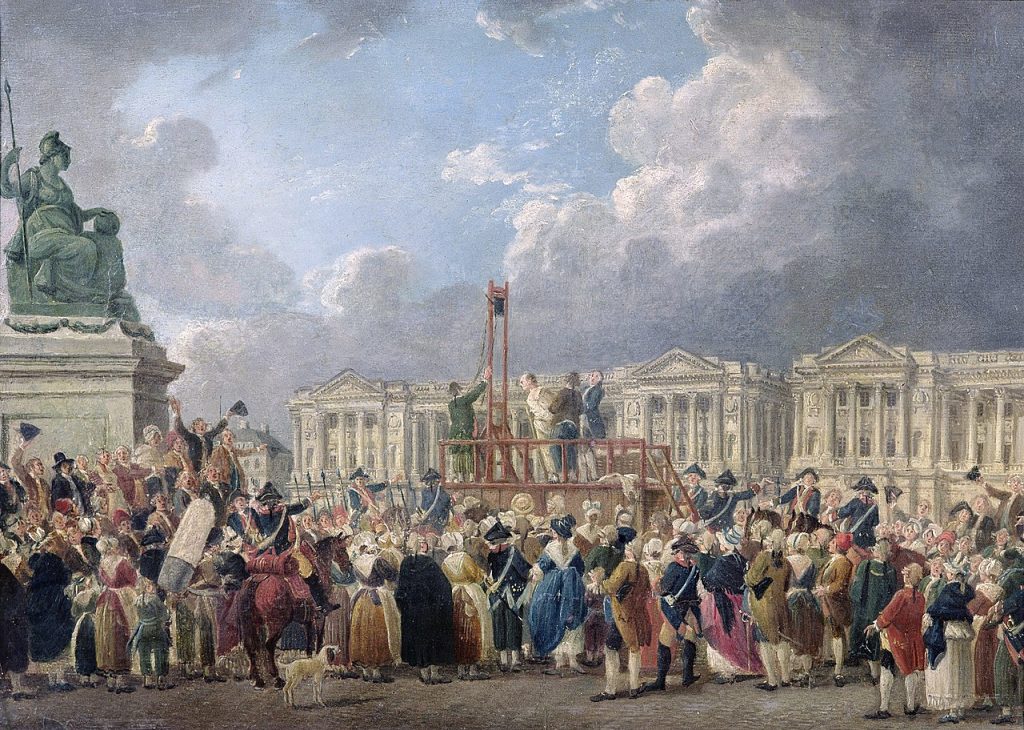
Jean-François Sablet – Portrait of a Revolutionary (1794)
At the time of the revolution, numerous young men were enlisted. However, this didn’t stop the aged men from joining them. The unknown man represents the collective identity. The republican scarf is suggestive of his position as an officer. The old man carries a tired expression as if to express his disillusionment over the current regime. If you look closely, you will see a generous use of blue, white, and red indicating patriotism.
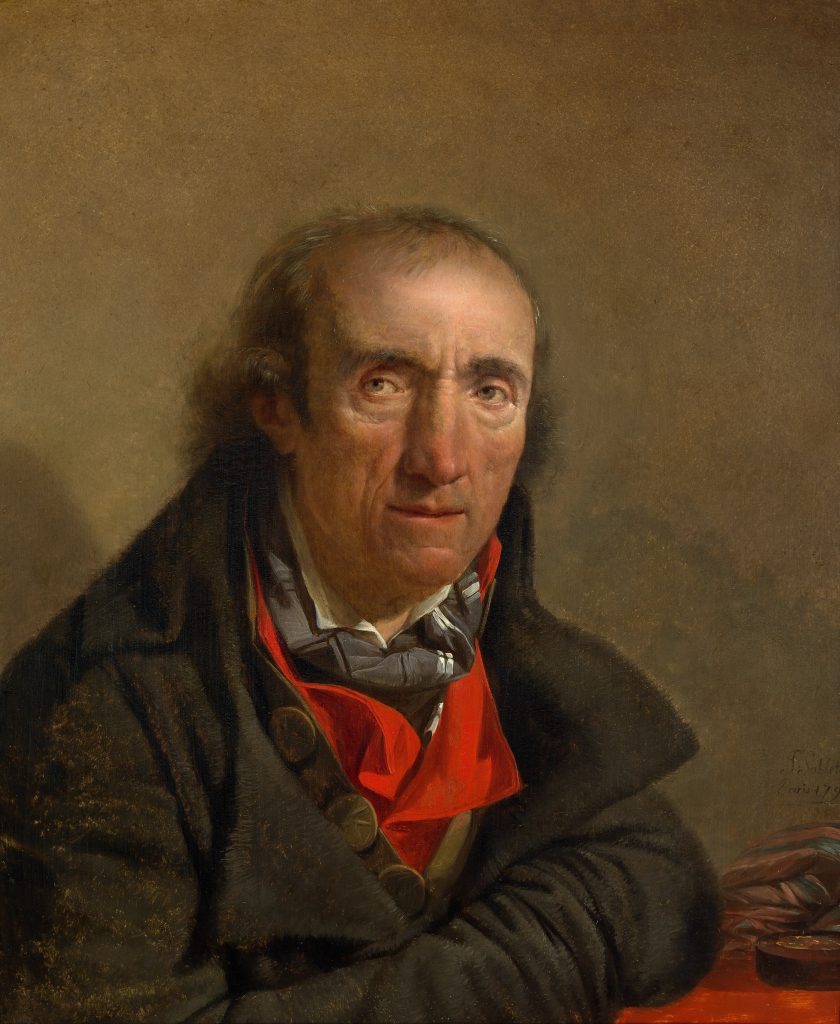
William Hamilton – Marie-Antoinette Being Taken To Her Execution (1794)
Nobody could’ve imagined a queen as powerful as Marie-Antoinette to have a major downfall. Despite the rage of the crowd and the visible contempt of her jailers towards her previous decadent lifestyle, Marie seems indifferent. Some might say she looks weakened and sad, yet undefeated. Despite Hamilton being an English painter and giving an outsider’s view of the event, he made no efforts to either glorify the Queen or downplay the crowds’ sentiment.
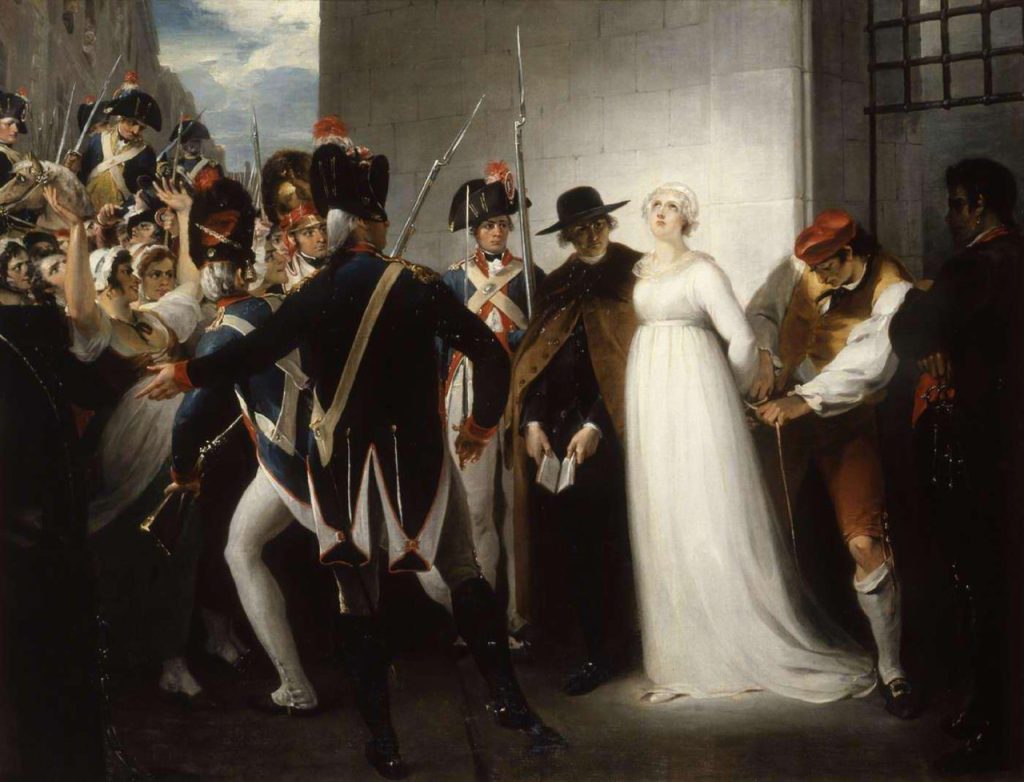
Jacques-Louis David – Napoleon Bonaparte crossing the Alps at Grand Saint Bernard (1802)
After becoming the First Consul and successfully overthrowing the ‘Ancien Régime’, Napoleon had a huge mission in front of him – to spread the core idea of ‘Liberty, Equality, and Fraternity’ to the nether regions of the world. Even though Bonaparte might have taken a more violent route as the picture represents his military campaign against the Austrians at the Battle of Marengo, he is drawn as a benevolent yet stern monarch.
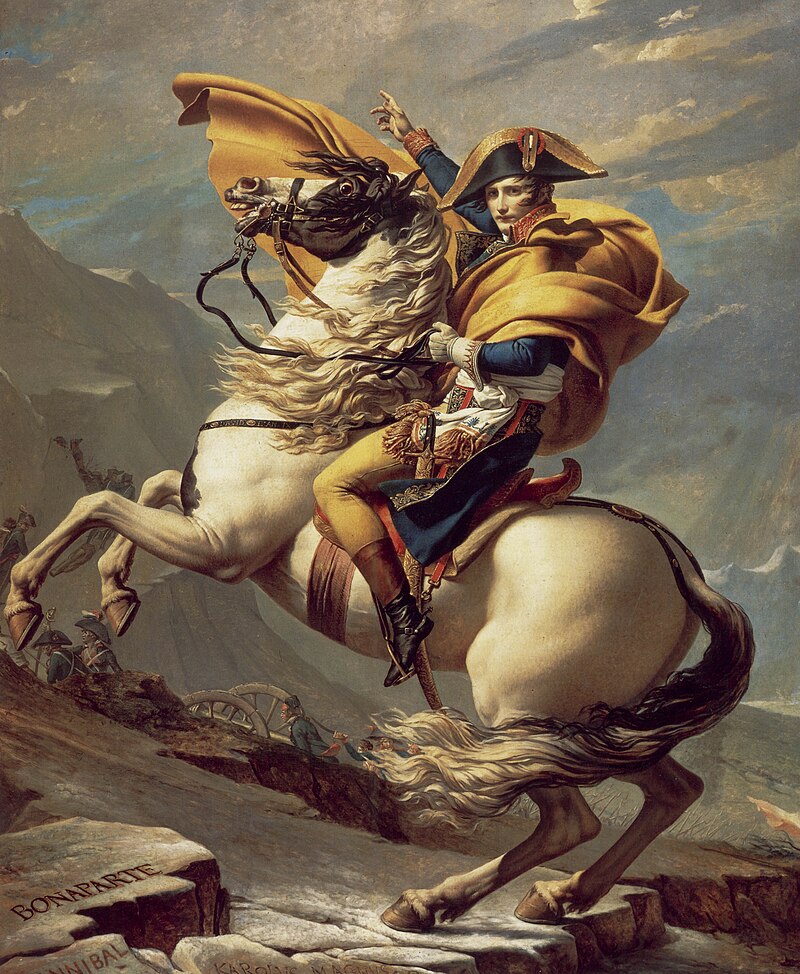
Jacques-Louis David – The Coronation of Napoleon (1807)
The painting features Napoleon, clad in the coronation robe about to place a crown on her wife, Josephine’s head. His coronation is blessed by Pope Pius VII, who seems to be irked by the entire idea of Napoleon taking the reign of the nation. The attendees in question all carry a serious expression signifying the moment’s importance.
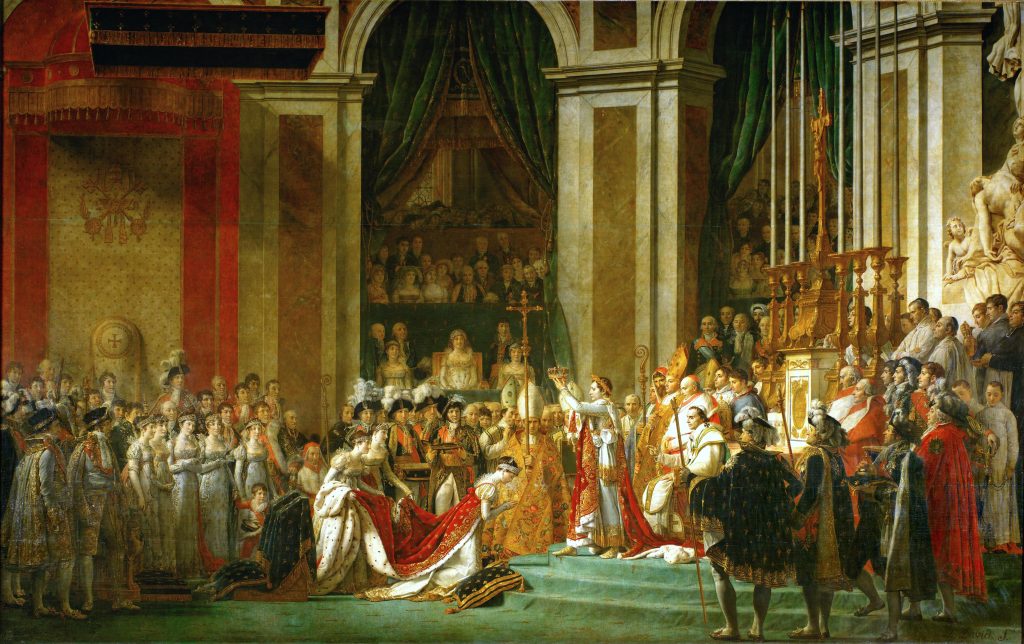
Eugène Delacroix – Liberty Leading The People (1830)
The painting was made after almost 30 years of the war. But what is the need to an about an event which has already been talked about? The painting depicts not the sacrifice, but the birth of a nation on the core ideas of the French Revolution. Lady Liberty is a personification of a mutual goal and the nation’s precious blood.
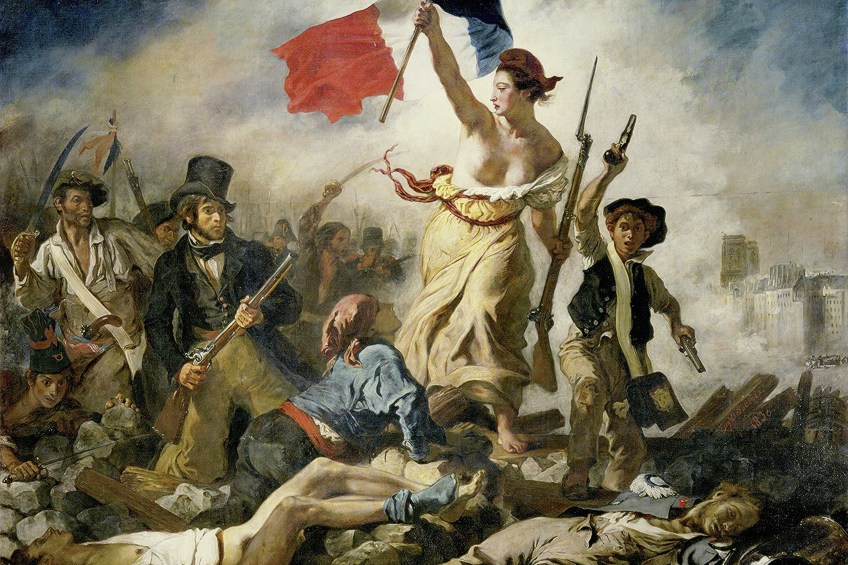
Image Courtesy – Britannica

Hi Ya’ll !!
I love writing about pop culture and all things queer.
Sub Editor at Abir Pothi

